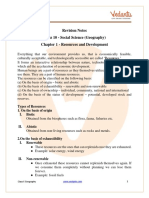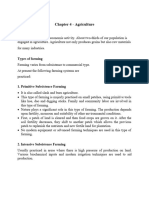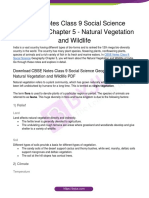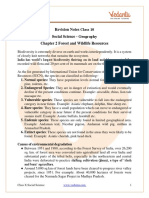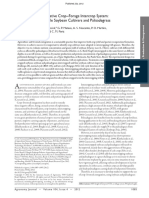0% found this document useful (0 votes)
467 views27 pagesResources and Development Notes
The document discusses different types of resources and their classification. It covers resources classified based on origin (biotic and abiotic), exhaustibility (renewable and non-renewable), ownership (individual, community, national, international), and status of development (potential, developed, stock, reserves). Specific examples are given for each classification. Land resources in India are also summarized, including distribution of land types and patterns of land use. Key soil types found in India are outlined briefly.
Uploaded by
bhaviknsrCopyright
© © All Rights Reserved
We take content rights seriously. If you suspect this is your content, claim it here.
Available Formats
Download as PDF, TXT or read online on Scribd
0% found this document useful (0 votes)
467 views27 pagesResources and Development Notes
The document discusses different types of resources and their classification. It covers resources classified based on origin (biotic and abiotic), exhaustibility (renewable and non-renewable), ownership (individual, community, national, international), and status of development (potential, developed, stock, reserves). Specific examples are given for each classification. Land resources in India are also summarized, including distribution of land types and patterns of land use. Key soil types found in India are outlined briefly.
Uploaded by
bhaviknsrCopyright
© © All Rights Reserved
We take content rights seriously. If you suspect this is your content, claim it here.
Available Formats
Download as PDF, TXT or read online on Scribd
/ 27







